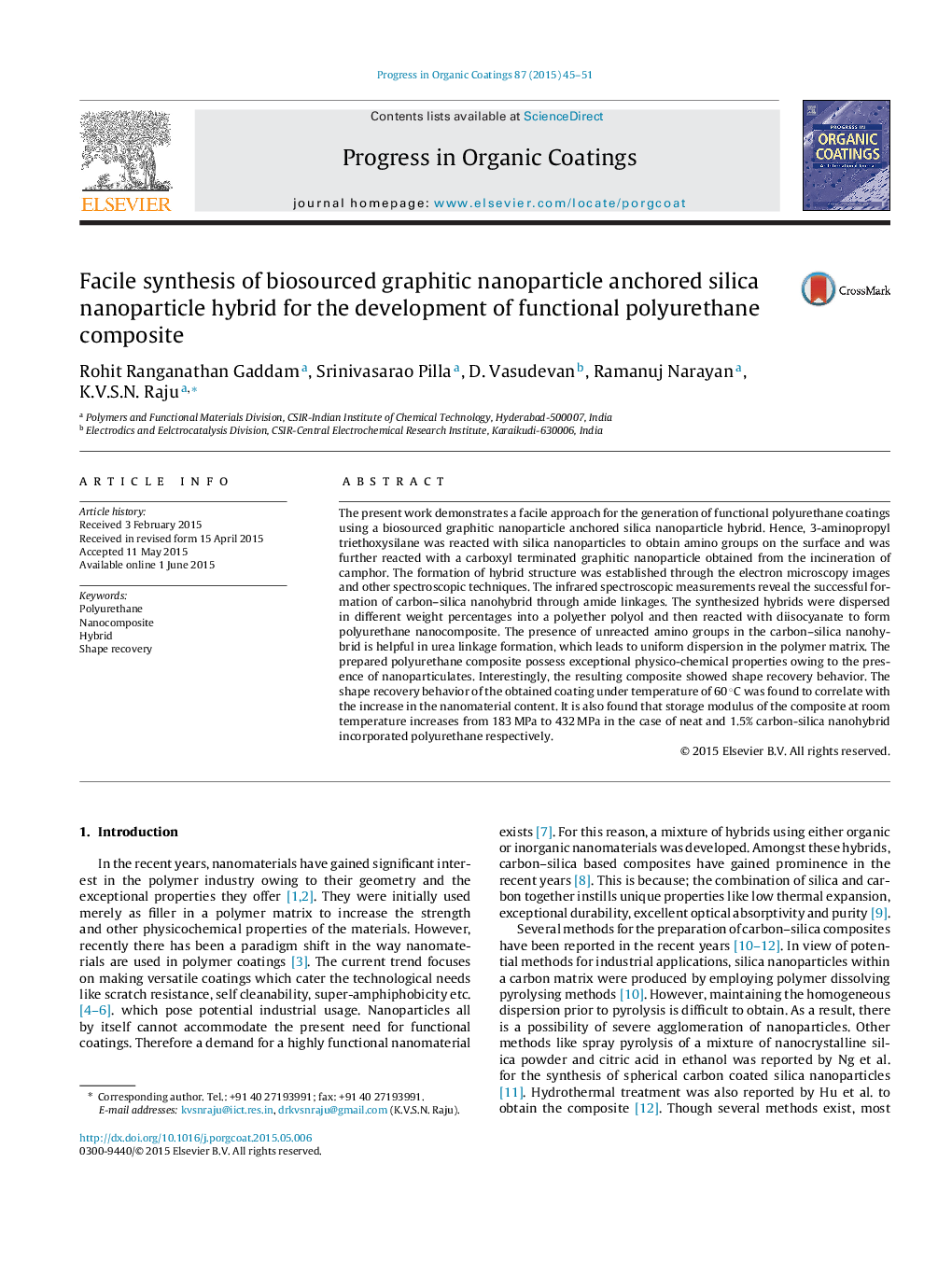| Article ID | Journal | Published Year | Pages | File Type |
|---|---|---|---|---|
| 7106821 | Progress in Organic Coatings | 2015 | 7 Pages |
Abstract
The present work demonstrates a facile approach for the generation of functional polyurethane coatings using a biosourced graphitic nanoparticle anchored silica nanoparticle hybrid. Hence, 3-aminopropyl triethoxysilane was reacted with silica nanoparticles to obtain amino groups on the surface and was further reacted with a carboxyl terminated graphitic nanoparticle obtained from the incineration of camphor. The formation of hybrid structure was established through the electron microscopy images and other spectroscopic techniques. The infrared spectroscopic measurements reveal the successful formation of carbon-silica nanohybrid through amide linkages. The synthesized hybrids were dispersed in different weight percentages into a polyether polyol and then reacted with diisocyanate to form polyurethane nanocomposite. The presence of unreacted amino groups in the carbon-silica nanohybrid is helpful in urea linkage formation, which leads to uniform dispersion in the polymer matrix. The prepared polyurethane composite possess exceptional physico-chemical properties owing to the presence of nanoparticulates. Interestingly, the resulting composite showed shape recovery behavior. The shape recovery behavior of the obtained coating under temperature of 60 °C was found to correlate with the increase in the nanomaterial content. It is also found that storage modulus of the composite at room temperature increases from 183 MPa to 432 MPa in the case of neat and 1.5% carbon-silica nanohybrid incorporated polyurethane respectively.
Related Topics
Physical Sciences and Engineering
Chemical Engineering
Process Chemistry and Technology
Authors
Rohit Ranganathan Gaddam, Srinivasarao Pilla, D. Vasudevan, Ramanuj Narayan, K.V.S.N. Raju,
